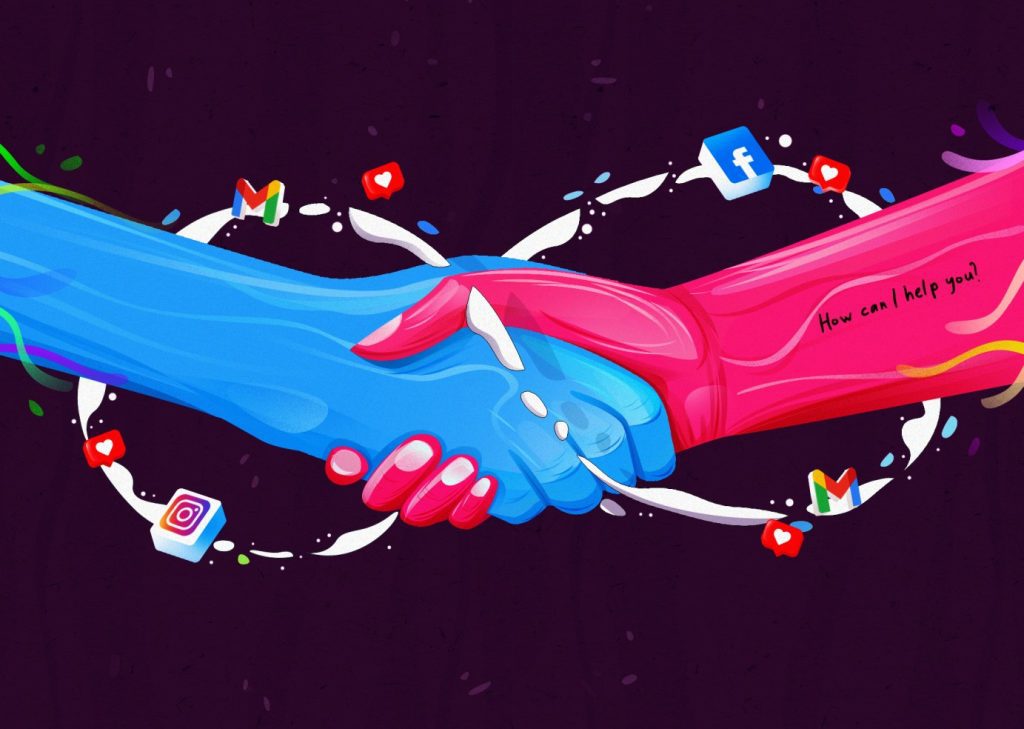8 Triggers to build your product more addictive & stick to loyal customers.
Impulses of users don’t coincidently match with the emotions of the users. This intersection is well-planned and initiated by the developers. An external trigger leads to habit and then habit leads to external triggers. An internal trigger happens when a product is supported by a thought and it can be an emotion or a pre-existing habit. This thought is created by external triggers. Like getting the app now to learn more! Purchase now or never statements.
Once a user is made to think about a product, he or she generates an emotion and habit towards it. This emotion can be FOMO, excitement, gratification, etc. It can be just enough and sometimes, more for the user to get hooked. The gradual transition of users from the external trigger to the internal trigger is the point of intersection between the impulse and emotion of the users.
Social and Sensory rewards let users independent of external triggers
After using a product, the user gets all his esteem needs, psychological needs, and social needs fulfilled from constant recognition and acceptance. Social and Sensory rewards will be showered on the users. Spontaneous likes and comments for photos, Reposts etc. and conversations around content posted online can keep the users on and on to gel and commit to the product. Once the users are committed to the products, the internal triggers will happen on their own. This benefits the user and the product in massive ways.
The user constantly gets users boosts like confidence, gratification and better ability to communicate. Additionally, they could reach over others using the product and would get influential capacities. Furthermore, the product gets immense power with the kind of conversations that the users have made around the product and also the visibility that’s created. Working with a top Behavioral Design agency will help you to figure out the appropriate triggers for your product.
Persistent routine in the user’s life with trigger
The play of the app designers with internal and external triggers creates a persistent routine in a user’s life. The phases in which the user uses the app and the comfort that the app provides to the user are planned by these designers. This is done by the designers, after constant research on user behavior and psychology.
“Design is in everything we make, but it’s also between those things. It is a mix of Craft, Science, Storytelling, Propaganda and Philosophy”
-Erik Edigard


Triggers to practice right from the welcome message to hook users
Trigger 1: Welcome message
The first trigger is vital to the product. A welcome mail with vital features of the application is a good way to introduce a new feature to the user. It reintroduces the benefits of using the product.
Trigger 2: Smooth triggers at the beginning
No triggers can affect the UI experience for the users. Push notifications should go along with features and concise steps to proceed in the application. Designers always make sure to push triggers at the onboarding by being careful to not jeopardize the efforts by placing heavy content in the design
Trigger 3: Early bird effect
It is always better to work the trigger in the early 72 hours of app activation. During this time, the users can be enabled to receive personalized offers, messages and other advantages.
Trigger 4: Reactivation triggers
Dead users will be awakened with reactivation triggers. Newsletters can act as reactivation triggers. Newsletters can give them a personalized message. It depends upon recency, frequency, and monetary value. These are values corresponding the consumer traits.
Trigger 5: Transactional triggers
Trigger messages after every transaction, shipment, and delivery needs to be executed. This helps reflect the efficiency of the product in serving the users.
Trigger 6: Milestone triggers
A product can track the usage details and give a quantitative value to the number of times the user is using the application. Milestone messages give a reason for emotional obligation from the side of the users. It is a great way to pave way for a long-term commitment from the users.
Trigger 7: Time-sensitive
Deadlines for payments, attending an event, or maybe closing a deal work well enough to create a great trigger. Giving time in the applications does show some sign of credibility and responsibility from the side of the product. It also activates a serious FOMO in users if they tend to leave out such messages from the application. Therefore, being time-sensitive is quite a big deal.
Trigger 8: Real-time triggers
The Triggers associated with real-time events can also exceptionally work well more as features than a trigger. It is usually considered as a gesture of help to the users. This helps users feel more in control when a product offers such features to them.
Conclusion
Every trigger above mentioned needs to be planned carefully, after exactly researching on when impulses meet emotion of a user. Starting from the phase when the application is introduced to the user to the phase of long term commitment of the user towards the product, a shift of external trigger to internal trigger is leveraged effectively. This is to hook user to the product for life.
Emotions are simply manifested in a user’s mind with simple tricks and strategies. It is eventually automated. This makes the users commited to the product for life . Therefore, an ultimatum for ethical designing is viewed in mind by a designer, before he decide to commit his users with triggers. After all, it is more about helping them than creating a deep negative impact that could lead them to lose their minds. Mindful triggering should be the talk of the designer’s town at least from now.


